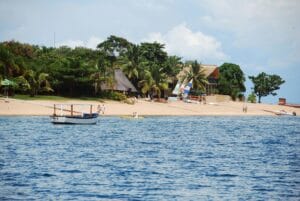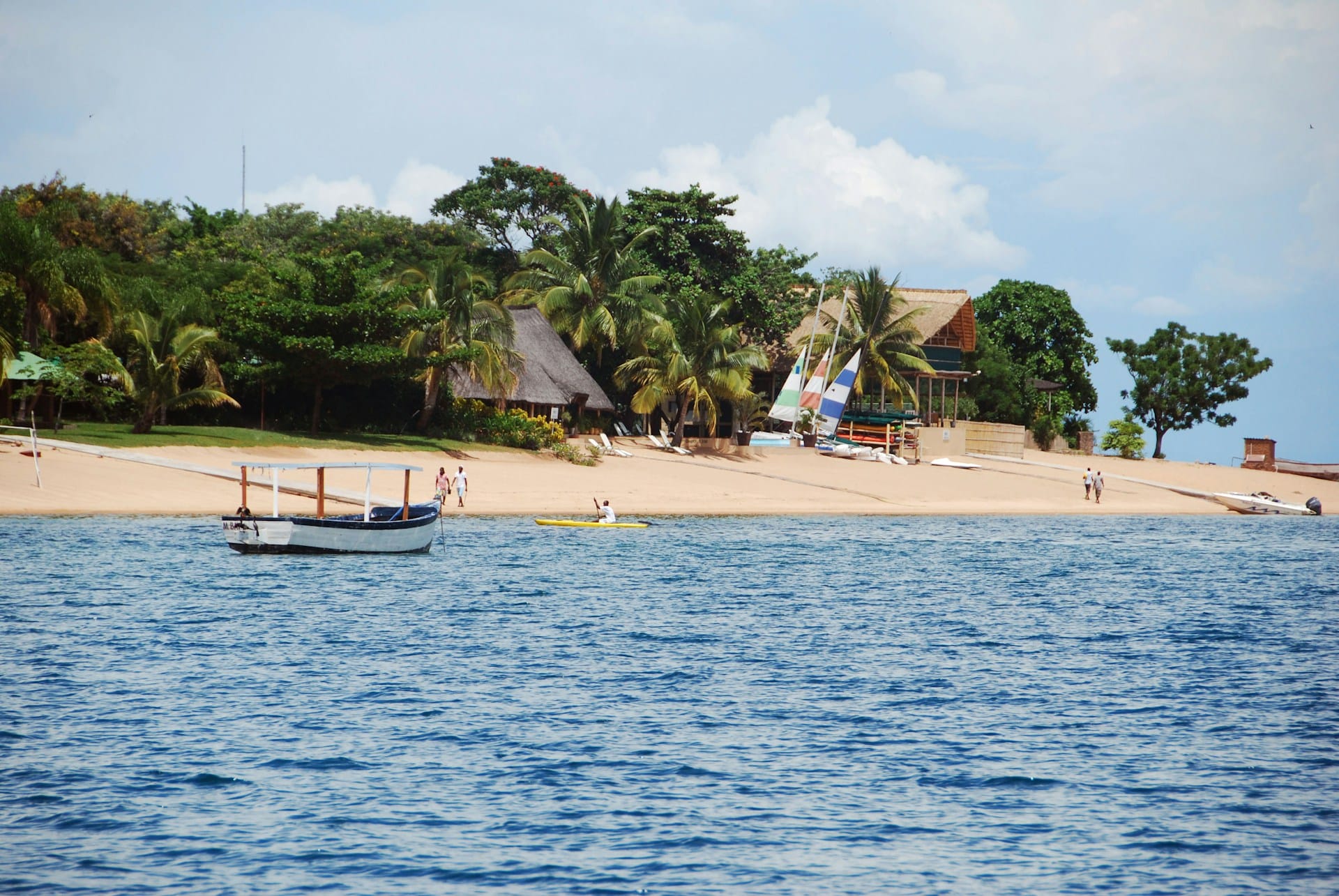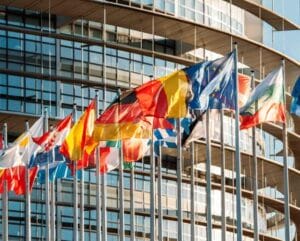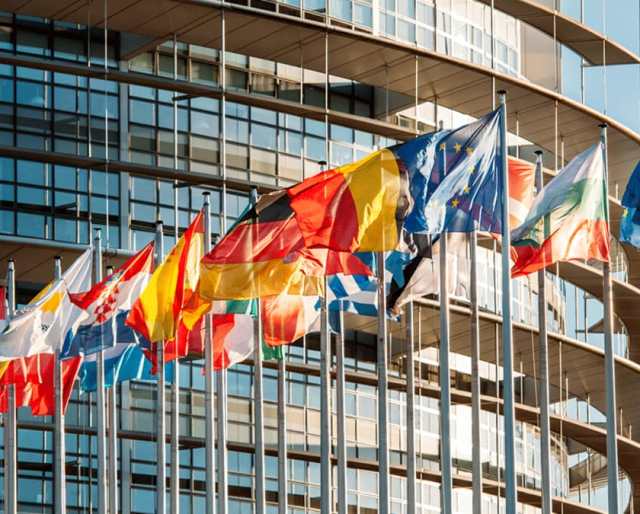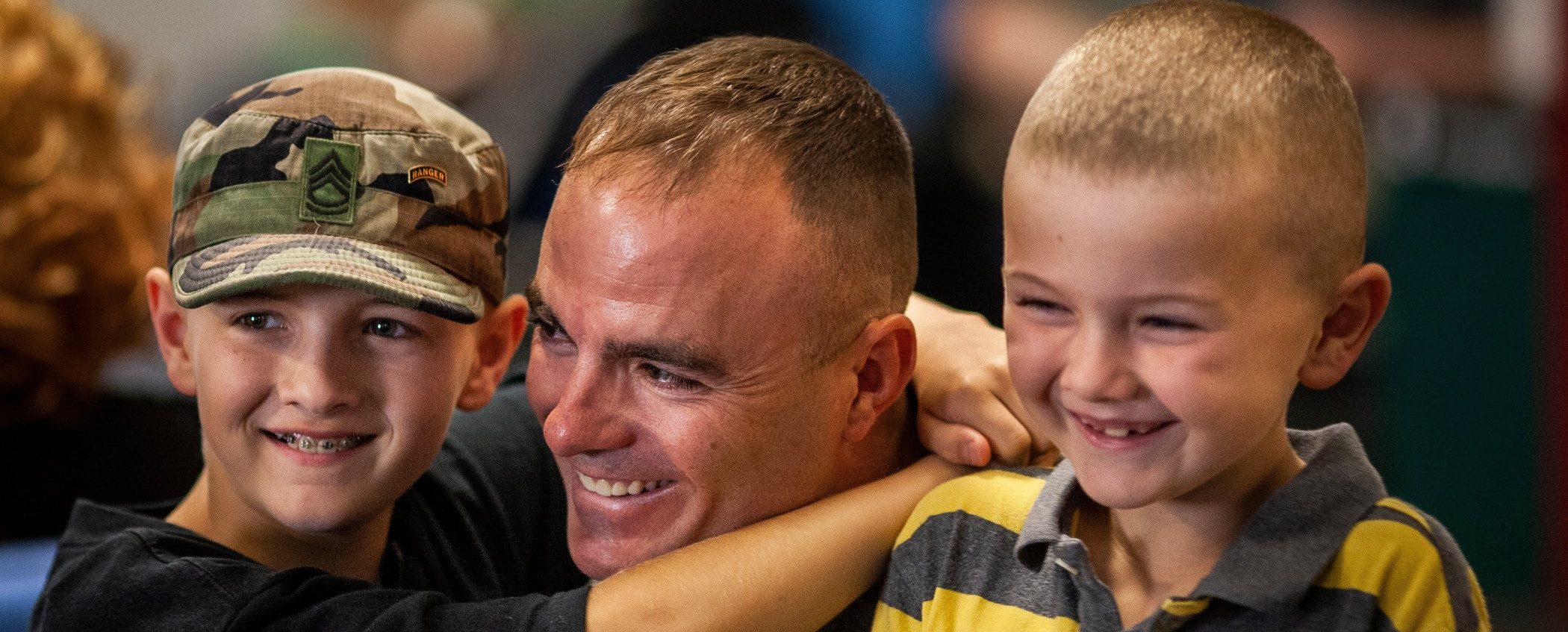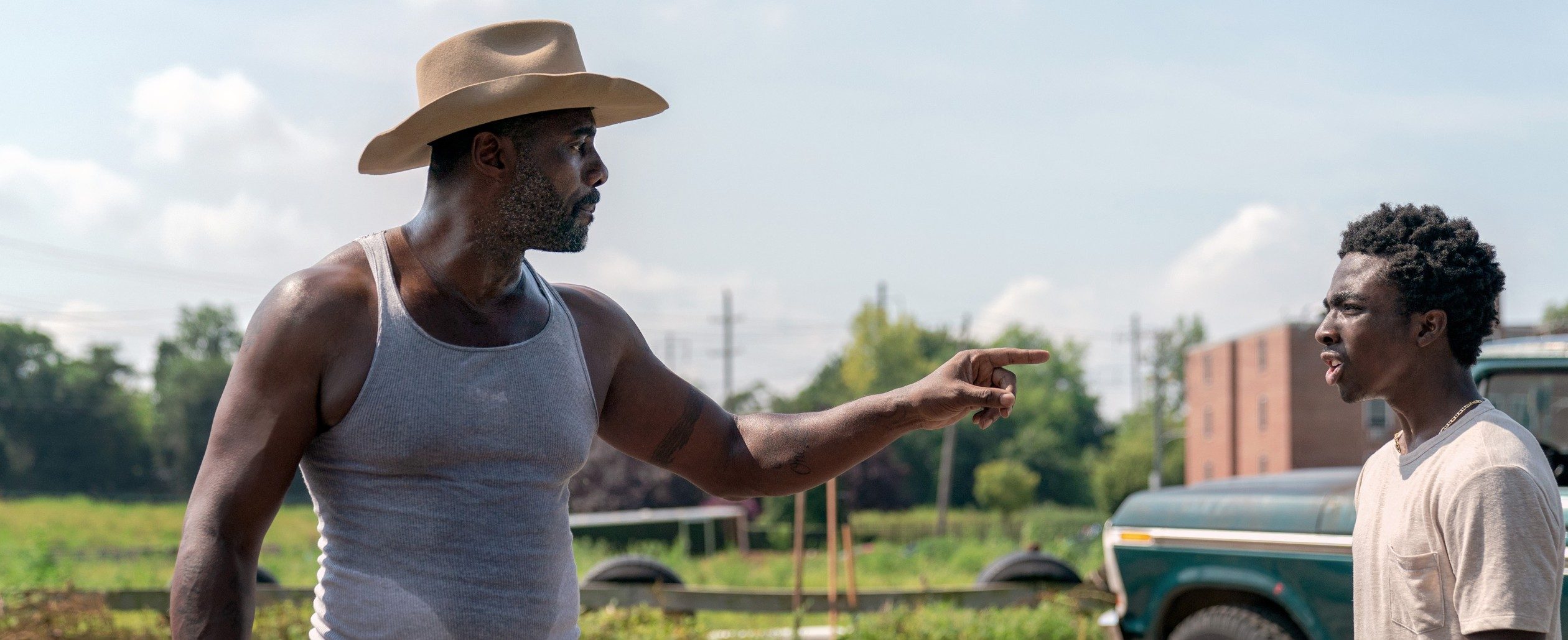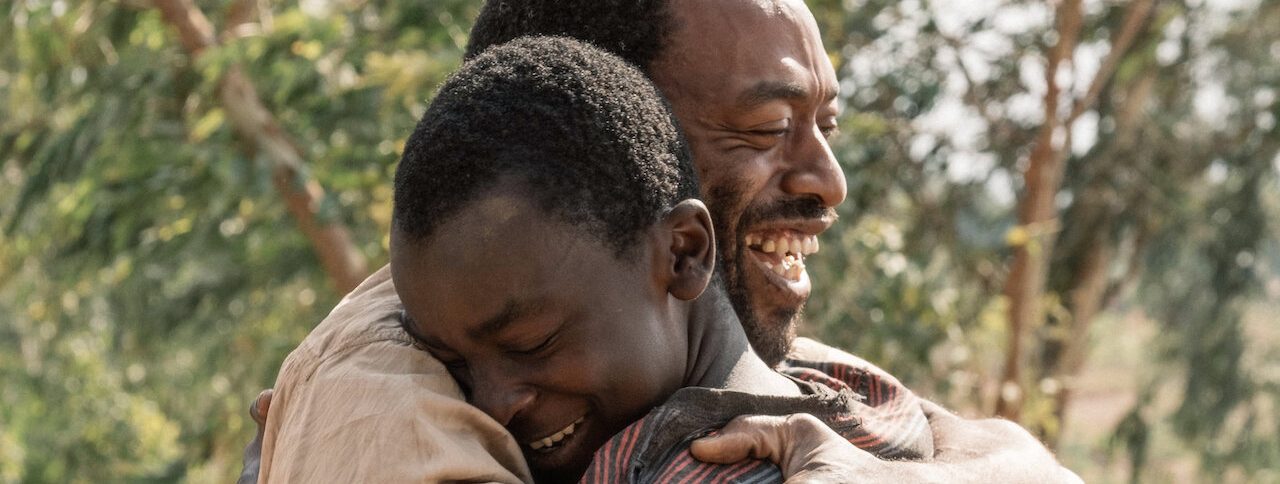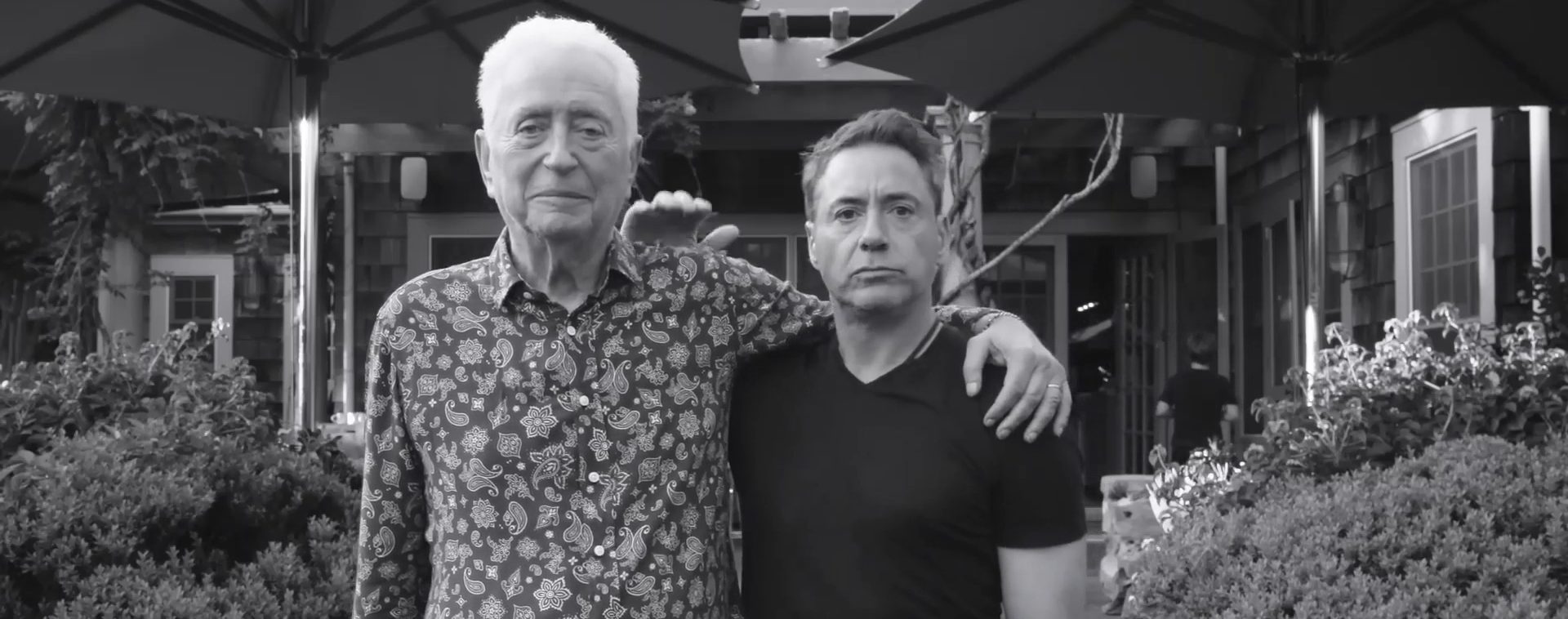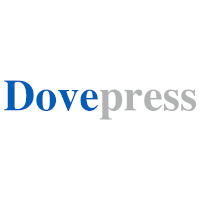

Introduction
Globally, humans have suffered, experienced, and endured deadly pestilences over the centuries. Historically, the worst pandemics ever recorded in the world include the 14th-century Black Death, the Spanish and Indian flu, HIV/AIDs, the plague, the various waves of Cholera, and Ebola,1–3 and the most recent novel coronavirus – SARs-CoV-2, commonly known as COVID-19.4 These among others have been a great threat to humanity from one generation to another, with their impact being massive loss of lives, economic losses, social and racial stigma among other health-related ills.1,2 Nonetheless, with credence to the inquisitive human mind, through science and technology, researchers and healthcare practitioners have tirelessly and effectively worked on vaccines and treatment plans to save lives.
This paper aims to compare selected aspects of the coronavirus and HIV/AIDS. It is beyond the scope of this paper to cover every aspect of these diseases. Therefore, our focus will be on the following components: their etiology and epidemiology; response and treatment; myths, misconceptions, and conspiracies associated with the two diseases; and their impact. From these aspects, we shall provide a candid discussion on the similarities and differences, and henceforth draw insightful lessons on how to prepare for and respond to pandemics in the future.
Before delving into the core issues, we briefly bring to the fore how these diseases unfolded into the global scene. On March the 11th, 2020, the World Health Organization officially declared COVID-19 a pandemic, after the virus had spread to 114 countries, infecting more than 120,000 and killing over 4000 people worldwide.5–7 This was in the early days of the disease outbreak, but its imminent danger was being felt. This is because, as evidenced by international organization reports and eclectic research studies, viral infections were spreading too quickly, perhaps due to human movements and interactions across the globe.3,4,7 With the perceived or real danger of the disease, scientists and significant others were putting resources and knowledge together to move with speed to strategically mitigate the spread and counter the mushrooming of misinformation, and disinformation that had become rampant in social media, hampering public health efforts across the globe.4,7 An outbreak that was seen as one country’s (China) problem, like wildfires became a global health emergency and placed the world at a standstill for almost two years. By 22nd August 2023, COVID-19 was associated with over 769.77 million cases, and over 6.95 million deaths worldwide.4,8
As intimated earlier, COVID-19 like other pandemics is riddled with a myriad of myths and conspiracy theories. For instance, a study in Ethiopia reported that protection from the virus was placed on religiosity and the effectiveness of consuming some food items, being exposed to hot weather, using traditional medicine, and alcohol drinking.9 In addition to these, 36.9% of the respondents held false assurances that they were living far away from areas where COVID-19 was rampant, and no local cases were reported.9 Inarguably, this posed a danger of exposure to the virus by failing to adhere to the public health regulations. A quantitative study investigating the perceptions of respondents on various aspects of COVID-19 found the following;
the novel coronavirus is deadly (83.3%), hand sanitizers do kill the virus (67.5%), face mask offer protection against the virus (55.8%), drying the hands with a hand dryer helps to prevent the virus (44.2%), coronavirus affect only the elderly (95%), the virus can spread by mosquito bites (87.5%), antibiotics are effective for treatment (60%) and homemade remedies can cure the coronavirus. (54. 2%)10
These statistics indicate indeed that there was a sense of confusion, misinformation, and conspiracies about the disease, which we believe impacted either positively or negatively in responding to and managing of COVID-19 pandemic outbreak. The question of how some of these theories helped people to cope with the disease remains an opportunity for further research. It is of paramount importance to explore these misconceptions and keep the public fully educated and informed about the facts of a pandemic outbreak to protect themselves.
Comparatively, while the COVID-19 outbreak was first reported in China and illusionary perceived as a Chinese disease, HIV/AIDS is attributed to the African continent. Mythically, HIV/AIDS was perceived as a “black peril” and debates that Africans as a racial segmentation were more susceptible to the virus were part of public discourse for years.11–13 Just like COVID-19, the early years of the HIV/AIDs outbreak were characterized by denial, fear, confusion and high levels of ignorance, which were reflected in the inconsistent explanations about the origins and transmission of the disease, as demonstrated in other sections of this paper. Apparently, misconceptions about HIV transmission are still prevalent, despite significant efforts in creating public awareness, available medication, and scientific evidence about the epidemiology of the disease.14 Previous studies from, Kenya, South Africa, Ghana and Indonesia reported misconceptions such as HIV could be spread through mosquito bites, touching an infected person, a healthy-looking person cannot be HIV positive, HIV can be cured by having intercourse with a virgin, eating fresh vegetables, and making ancestral sacrifices.15–19 It is against this backdrop that, curious questions remain as to who or what is responsible for these pandemics’ outbreaks, how and why the public responds in the way they do, and how best can the public respond to future pandemics among others. This paper compares selected aspects of the two pandemics to understand the similarities and differences and draw insightful lessons on pandemic outbreaks to inform public healthcare interventions.
Problems Statement
The history of mankind has been confronted by unprecedented disasters including health-related pandemics. Pandemics in the past and even in the modern dispensation have massive effects on the human species. Recent pandemics such as Coronavirus and HIV/AIDS have caused millions of deaths,20 economic losses,7,21–23 societal disintegration and perfidious impacts on mental health.24,25 Moreover, these diseases create fear, uncertainty, stigma, and labelling among individuals, families, communities, and countries. A recent study revealed that people tend to avoid contact with individuals affected with COVID-19 (74.3%) or AIDS (59.0%), including their family members (70.4% for COVID-19 and 47.9% for AIDS).26 Irrefutably, the implications for the fear of contagion are avoidance, blame, and secondary discrimination, which may stifle the efforts by governments and the World Health Organization in combating the pandemics.
However, through significant scientific breakthroughs in terms of discovering and developing vaccines, and social measures such as quarantines, countries have been able to combat the spread of viruses, hence saving lives. However, despite these milestones, the COVID-19 pandemic has tested and challenged countries’ healthcare systems as well as administrative structures that are not yet holistically prepared and resourced to detect, predict, and control the spread of pandemics. Therefore, as alluded to by other researchers, there is a need to focus on developing better ways to prevent the emergence of new pandemics and creating a holistic response system around the globe.2
The public health messaging of pandemics is of paramount importance to effectively and efficiently respond to and manage the impacts of diseases. Research indicates that information on pandemics such as COVID-19 and HIV/AIDS are marred and muddled by misinformation, misconceptions, disinformation, conspiracies, and myths from different sources such as social media, all rendering the efforts to combat the disease less effective.7,26 A study by Olson and Nelson indicates some conspiracies about COVID-19 as being a group of elites using COVID-19 to gain power (new world order debate); the COVID-19 virus is not more contagious than the flu; the 5 G networks and technology being the cause of the disease; and that the virus was produced in a lab in Wuhan China among others.7
On the other hand, even after HIV/AIDS has been in the public domain for decades, the latest studies continue to show misconceptions and dominant myths about the disease.27,28 This is detrimental to the prevention and management programs towards the elimination of the virus. Therefore, demystifying misconceptions and mythical nuances about pandemics and epidemics is unequivocally vital in averting the health hazards to healthcare providers, the public, and loss of financial resources for any country. Thus, comprehensive knowledge of HIV/AIDS and Coronavirus, for instance, is fundamental for behavior change and uptake of recommendable healthcare services.
Materials and Methods
The origins and impacts of pandemics are multifaceted. For instance, HIV/AIDS and Coronavirus have economic, social, health, political, religious, and technological dimensions. This means to understand these aspects different research approaches such as quantitative, qualitative, and mixed methods should be used.29–31 This paper adopted a discourse analysis, a sub-method of qualitative research to compare selected aspects between COVID-19 and HIV/AIDS pandemics. Although COVID-19 is a recent pandemic compared to HIV/AIDS, which spans close to half a century, the two diseases appear to have some interesting commonalities that prompt or motivate a research investigation. Through a literature search, no straightforward publications comparing the two pandemics were found; hence this paper seeks to address that gap. However, there is a plethora of literature on these pandemics, thus providing adequate information to conduct a comparative analysis. Notably, this is not a systematic review, but a discourse analysis of various literatures to inform discussions driving to a meaningful conclusion on the subject. The primary research paradigms informing this analysis are the pragmatism and interpretivism paradigms.29,31 These paradigms are critical in analyzing and understanding social issues from multiple lenses in social settings. This is useful in this paper that entails, the health, social, economic, and political dynamics of diseases.
The paper utilized journal articles published in the English language, from across the world. These articles used quantitative, qualitative, and review methods. These multiple methods provide confidence that the information reported in this paper is valid, verifiable, and reliable. The articles and other relevant information from credible organizations such as the World Health Organization and Centers for Disease Control and Prevention were searched using words and statements such as COVID −19; HIV, AIDS, myths about HIV, myths about COVID-19; vaccines on COVID-19; origin of COVID-19/HIV/AIDS, treatment, and management of HIV/AIDS/ COVID −19 etc. Google Scholar was the main source of these articles.
The analysis focused on comparing aspects such etiology and epidemiology of the pandemics, myths and conspiracies, response and treatment, and economic and social impacts among others. Unearthing the similarities and differences, either behavioral or medical, was imperative in drawing insightful and informative lessons on current and future preparedness for response and management of pandemics of mass destruction.
Limitations
This paper focused on comparing two pandemics whose lifespans are different in various contexts. The major limitation of this analysis is that it has not compared regions such as Africa, Asia, Europe, and America to indicate variations in the various aspects and impact of the diseases. Perhaps, such findings would indicate how different communities respond and manage outbreaks of pandemics. As such the findings are more inclined to the African contexts. Nonetheless, the findings are insightful on the impact and other characteristics of the pandemics across the globe.
Findings
Aetiology and Epidemiology of HIV/AIDS
It is important to understand the genesis of diseases and how they spread across populations. Such knowledge and understanding expedites their effective and efficient interventions. The term aetiology refers to the origin and causes of diseases or factors that predispose towards certain diseases; while epidemiology, on the other hand, focuses on public health issues, the appropriate responses, interventions, and solutions.3,32 The early cases of HIV/AIDS were reported in the 1980s in humans and were associated with a type of ape (Chimpanzee) in Central Africa, where people are believed to have encountered the animals through hunting in the late 1800s.3 This implies that the human socioeconomic activities of hunting and gathering wild fruits might have predisposed them to the chimpanzee’s simian immunodeficiency virus (SIV), which is believed to have mutated intoHIV.3 Notably, therefore, there are possibilities that people lived with virus for quite a long time before it was scientifically discovered.
HIV is mainly transmitted from person to person through blood or body fluids, sexual intercourse, and breastfeeding.20,33 HIV attacks the body’s immune system and progresses to AIDS if the immune system is severely weakened.20,33,34 As of the year 2022, 39 million people were living with HIV/AIDS, and over 40 million had died globally since the onset of the virus.20 Notably, the African continent has been hardly hit, with statistics indicating that 3.2% of the population was living with the virus in 2022.20,34 Perhaps, a sharp difference between HIV/AIDS and coronavirus is their gestation period, meaning the time it takes from inception to attain a full-blown status. HIV/AIDS has a longer gestation period of 7–10 years if no interception of ARVs occurs, while coronavirus has a very shorter gestation period of between 7–14 days. This means one can succumb to death after the 14th day from the time the virus got into one’s body.35
Etiology and Epidemiology of Coronavirus
Just like HIV/AIDS, the outbreak of COVID-19 is attributed to animals. The genesis of COVID-19 is believed to be a zoonotic transmission associated with animals such as bats and pangolins in a Chinese seafood market.36–38 Credible scientific evidence shows that bats and pangolins have a gene sequence like SARs-Cov-2 at 96.2% and 99% respectively.38 Therefore, these animals are strongly believed to be the source of coronavirus disease.39 The transmission, however, remains to be person-to-person accounting for the widespread of the disease across the globe in a short period.36,40
COVID-19 patients manifest clinical features such as fever, cough, fatigue, dyspnoea and conjunctivitis, to mention but a few, varying from asymptomatic to symptomatic.41–43 Other patients reported loss of senses such as taste and smell.44 Research shows that the mean incubation period of COVID-19 is three to nine days, with an asymptomatic period lasting for fourteen days.36,37 The clinical diagnosis includes physical examination, nucleic acid detection, and CT imaging among others (Ullah et al, 2021).
The Myths and Conspiracy Theories on HIV/AIDS and COVID-19 Pandemics
Myths consist of narratives that influence people’s everyday lives. Myths are usually endorsed or dispelled by political leaders, community rulers, and religious personalities among others, and they shape people’s beliefs on various lifestyles.45 Thus, cultural, political, and religious beliefs have a significant impact on the public’s mindset in a particular region or country.45 Myths related to various pandemics have been prevalent from time to time, and it takes decisive interventions to demystify them through an evidence-based approach. In the current dispensation, myths about pandemics are shared widely and easily from one person to another, a human behavior that has been catapulted by the plethora of social media platforms and mobile phone technology. Myths about pandemics can be very dangerous, as they can lead to over-complacency or other health hazards.46
Myths and Conspiracy Theories About COVID-19
The onset of global pandemics such as COVID-19 is characterised by the diffusion of misinformation about the virus, its origins, and effective prevention and treatment strategies. Since the outbreak of COVID-19, researchers have investigated and recorded numerous myths and false theories about the disease. For instance, a study by Coffie, Nkukpornu, Kankam and Ocloo identified that the study participants believed COVID-19 is a disease for white people and not black people; the disease only attacks and kills people living in cold regions; the African blood is immune to coronavirus; the disease is not real, it is stage managed; taking alcohol, ginger, garlic and exposing oneself to hot temperatures can prevent or cure COVID-19.47 The conspiracy theories around COVID-19 also include the impact of advancement in technology, with the 5G mobile network being perceived as a cause of the pandemic, and that the vaccine would change the human DNA.48 Moreover, there are false theories about the vaccine containing a microchip, that would be used to control people’s lives using a 5G network. Thus, the vaccines were perceived to have the potential to cause infertility and being used as a bioweapon against black people.38,48
To counter all these myths and conspiracies, the World Health Organization prepared and released shareable infographics about the disease, more especially on prevention to debunk the misconceptions.4 However, despite this, research indicates that exposure to correct graphic information did not affect misperceptions about the prevention of COVID-19.49 This shows how people quickly get entrenched in false information, perhaps due to fear, and such information being first-hand, before the correct public health information publication. Regrettably, misinformation, misconceptions and misperceptions pose serious challenges in the management of infectious diseases. Indubitably, they derail the uptake of vaccines, treatment, and other preventative behaviors such as social distancing, masking, or quarantine procedures.49 Consequently, the control and management of the viruses becomes expensive and mortality rates increase.
As alluded to earlier, religious beliefs influence how people respond to pandemics. A study on myths about COVID-19 in the United States of America revealed that Christian nationalism was negatively associated with COVID-19 vaccine confidence and negatively related to the odds of COVID-19 vaccine uptake.50 Their study concluded that Christian nationalism was one of the strongest predictors of COVID-19 vaccine hesitancy and was negatively associated with having received or planning to receive a COVID-19 vaccine.50 This behavior is not unique in America, but prevalent in other continents such as Africa, where church leaders and personalities perceived COVID-19 as a demonic attack, and the mark of the beast described in the Bible, hence urging people to shun away from the vaccines. Despite the virtues associated with Christianity, Christian nationalism has been antagonistic to science in matters of vaccine, and reproductive health (modern birth controls) among other contentious issues.50
The presence of myths, conspiracies and disinformation results in serious health, social and economic ramifications as people tend to gain a false sense of security of being immune to the infection, hence exposure to high-risk situations. Myths associated with pandemics mainly prevail around causation, disease transmission, and cure. Inopportunely, public stigma is embedded in mythical thinking, hence shaping the behavior of people towards the disease and those infected.46
Myths and Conspiracies About HIV/AIDS
Just like the COVID-19 pandemic, HIV/AIDS has had an equal share of myths, especially among the black African populace.51 Previous studies have documented various HIV/AIDS myths and misconceptions aligned to racial segmentation, cultural, political, religious, and sexual behavioral lenses. The racial myths include HIV being manufactured by whites to reduce the black African population; and HIV being caused by supernatural forces or witchcraft.17,52 A cross-sectional study on HIV/AIDS in South Africa indicated that a misconception that “witchcraft plays a role in HIV transmission” was significantly related to less positive attitudes about condoms, less belief in condom effectiveness for HIV prevention, and lower intentions to use condoms among men.17 The study also reported that the misconception that “vitamins and fresh fruits and vegetables can cure AIDS” was associated with lower intentions among men to use condoms.17 Their study further revealed that women who linked HIV/AIDS to witchcraft had a higher likelihood of unprotected sex with a main partner; and that ARVS were poisonous and made people sick.17 This is a relatively similar scenario to the COVID-19 vaccine rollout across the globe but with more hesitancy in Africa.4 Thus, these misconceptions and mythical thinking hampered effective HIV/AIDS prevention measures in African settings.
In America, various studies undertaken in the early 1990s revealed genocidal misconceptions associated with HIV/AIDS among the Black American population.53–55 Moreover, other studies have revealed racial-based and cultural-based misconceptions, where the black population had a false belief that their White counterparts were responsible for the contagious epidemics and pandemics.56–59 Arguably, this presents serious racial illusions and delusions about the diseases, a behavior that stifles public health interventions towards effective prevention, management and treatment of HIV/AIDS. The contemporary myths and misconceptions about HIV/AIDS, like the case of COVID-19, are primarily on disease causation, mode of transmission and the effects of the virus on human populations.59 A critical analysis of these myths indicates that they are rooted in political history (racial mistrust), sociocultural values and religious ethos, all shaping how people perceive life challenges and the source of solutions.
For instance, the perceptions that HIV was created by whites to annihilate populations in sub-Saharan Africa elucidate some of the sociopolitical tensions and feelings of malevolence embedded in memories of imperialism and the colonial era.57 On the other hand, the perceptions that HIV/AIDS is caused by supernatural spirits mirror the deep African traditional view that diseases without cures are a result of malicious spiritual attacks.60 These metaphysical perceptions extend further to bring some sense of self-guilty that HIV/AIDS infection is a consequence of violating some moral codes that regulate sexual activities, hence the punishment from God or gods for sexual promiscuity.60 From a morality point of view, HIV/AIDS was perceived as the disease of homosexuals.61 Even though research indicates a high prevalence of HIV/AIDS among gays and lesbians,62–64 the mythical perceptions that the disease is for homosexuals create an environment of vulnerability to infections among other segments of the population. Irrefutably, research has shown that these misconceptions and myths undermine the effective and efficient delivery of HIV/AIDS prevention and management interventions in the world.
Response to the HIV/AIDS & COVID-19 Pandemics
Generally, pandemics are sporadic, and every disease is different from another. With such unpredictability of outbreaks, governments and international health organizations adopt a reactive approach to intervene. The response to pandemics includes activities such as creating awareness, prevention (could be through vaccinations, personal hygiene, restrictions or using protective gear such as condoms for HIV or masks for COVID-19), and treatment. Basically, at the onset of the pandemic, there are no clear methods of prevention, vaccines, and treatment plans. Resultantly, the prevention measures are hurriedly designed like in the case of COVID-19 which included maintaining social distancing, using masks, hand washing and sanitizing.38 Research shows that the adoption of protective health behaviors such as personal hygiene, social distancing and wearing of masks slows down the transmission of COVID-19.65 Although the efficiency of these preventive measures is low, the COVID-19 vaccines were approved for use within a short period with the hope of higher efficacy.4 The vaccine uptake, however, was faced with hesitancy on the basis of safety and the institutions manufacturing them.38,66 Nonetheless, the vaccines for COVID-19 were availed within a short scope of time, while the HIV/AIDS vaccine is yet to be confirmed. The quick response in providing vaccines for the COVID-19 pandemic sparked informal racial debates in some African-Black communities that their White counterparts were quick to save their lives through vaccines, whereas HIV/AIDS has been there for decades without a potent vaccine. Perhaps, this is why COVID-19 was politicised by some presidents such as the late Tanzanian president Magufuli,67,68 and the former US president Donald Trump.7 While the Tanzanian president Magufuli denied the existence of COVID-19 and its devastating effects while insinuating that it was laboratory produced,67 Donald Trump castigated lockdowns and the restrictions as activities against human rights hence downplaying the seriousness of the pandemic.7
These political utterances about the COVID-19 pandemic preventative measures catalysed citizens to believe that public health measures were an impingement upon their freedoms and that doing independent treatments or preventative measures, were appropriate. These utterances perceptively presented hegemonic ideologies confusing the truth of the disease, and endorsement of the myths that some elites and powerful sovereignties were trying to use COVID-19 for political control.7 Similarly, a former South African president has been recorded for being a famous HIV/AIDS denialist.69–71 His utterances of denial as the then sitting president, that HIV does not cause AIDS and deaths is attributed to massive deaths in South Africa and affected the access and update of ARVs. Therefore, when senior government leaders become agents of disinformation and misinformation, the public healthcare efforts in responding to the pandemics through awareness, vaccination and treatment are severely undermined.
The Impact of COVID-19 and HIV/AIDS
Indubitably, every pandemic has a serious impact on health, social, economic, and political systems. In this section, we focus on the social and economic impact of these pandemics. Socially, COVID-19 brought about stigma and stigmatisation among individuals and communities. A study on stigma related to COVID-19 shows that survivors were stigmatised (60.82%), and the disease intensified social rejection, financial insecurity, internalised shame, and social isolation.72 This stigma was not only meted towards the survivors but also the family members and spouses. Consequently, the loss of life, economic losses, and stigma during the COVID-19 pandemic led to depressive conditions, which further affected people’s health.72
All pandemics have pecuniary implications that have significant effects on the national and global fiscal and financial budgets. This is because with the outbreak of pandemics, the financial commitments burgeon and become a serious burden for countries. Researchers have delineated the pecuniary concerns associated with COVID-19 to be costs to the health system, both public and private. They include medical treatment of the infected and strain to health care systems to deal with extra routine health issues.73 Moreover, emergency events, quarantines, and social distancing measures impacted on the financial markets.73,74 Additionally, the public health responses such as awareness programs, testing and quarantine, and income support packages placed extra financial burdens on government and philanthropic institutions.73 As a result of lockdowns and related restrictions, many people lost employment, which affected economic productivity and income levels from households to national levels through loss of foreign direct investment.74 On the other hand, HIV/AIDS has cost nations and international organizations billions of money on medication (ARVS), condoms and awareness campaigns.20
Discussion
Pandemics have negatively impacted humans from ancient days to the current dispensation. The magnitude and the impacts of the pandemics have had different scales, from the loss of human life to economic and social disruptions. Of great interest is what lessons we draw from these pandemics for better preparation in the future. This is important to depart from a false sense of disease normalisation and blinding prospects for the future. This paper focused on four aspects of COVID-19 and HIV/AIDS pandemics, which are the etiology and epidemiology, myths and conspiracies associated with pandemics, response to the pandemics and the economic impact. The analysis discovered some similarities and differences that are outlined in this section.
Firstly, the analysis revealed that the genesis of these two pandemics is associated with animals, and then transmitted from person to person. HIV/AIDS is attributed to human interactions or contact with apes in central Africa, while COVID-19 is attributed to bats and pangolins in China. Geographically, HIV/AIDS is traced in Africa, while COVID-19 is traced in Asia – China. Apparently, the interactions between humans and animals through hunting for food and the trade of exotic pets harbour potential risks of spillover of zoonotic pathogens. This implies that the outbreak and spread of infectious diseases are likely to be common in the future due to increased human activities and their effects on the environment. Therefore, institutions and centres concerned with public healthcare globally should equip themselves for such eventualities in the future.
The analysis revealed that both pandemics were marred with misinformation, misconceptions, disinformation, myths, and conspiracies. All these were around causations, racial extermination, and prevention and treatment. Notably, in both pandemics, there were misconceptions that the whites were on a secret agenda to exterminate the blacks through incurable diseases and holding back treatment. These views were more prominent in Africa and other mixed-racial continents such as Asia and America. The tendency for information, including false information to spread is increasingly enabled by technological advancements and access to social media.75 Most people are likely to believe the information they receive from social media without even a sense of verification; hence an apparent behavior of endorsing myths is seen in this analysis. Considering the pernicious ramifications of spreading false information about HIV/AIDS and COVID-19 through social media and other platforms, it is essential to explore and counter such behaviors.
Generally, conspiracy theories can surge when societies are in moments of crisis such as during a rapid political change, natural disasters, and disease outbreaks as witnessed during the COVID-19 pandemic.75 Research on why people might hold on conspiracy beliefs suggests that is a result of a vacuum, when important psychological needs are not being met, such as experiences of anxiety, uncertainty, and threats.76 Arguably, therefore, if conspiracy beliefs address psychological needs, the motivation to endorse them is justified as a remedy. Contrary to this, however, a different study revealed that conspiracy beliefs do not reduce anxiety, uncertainty aversion, or existential threat, but increase these negative feelings.77 Nonetheless, emerging research demonstrates that appealing positives of conspiracy endorsement are overshadowed by evidence of the dangerous consequences of these beliefs.78,79
Misinformation that promotes false preventives or cures can hinder necessary behaviors to reduce the spread of diseases.49 For instance, a South African study shows that HIV/AIDS stigma in South Africa is driven by ignorance about the AIDS etiology and epidemiology, weaker campaign infrastructure in the rural areas, poverty of the people, denialism, and myths.28 In the same vein, a study in Ghana indicated that respondents with high knowledge of how HIV may be transmitted, highly educated, and wealthier had lower tendencies to endorse myths about the disease, compared to the less educated and poorer ones.18 Indeed, myths and misconceptions are significant factors influencing people’s behavior towards the disease. Previous studies have found that the youths who endorsed HIV and AIDS myths experienced their sexual debut much earlier, and were more sexually active, and more likely not to use condoms compared to those rejecting such myths.60,80 Similar evidence has been found among those who believed HIV/AIDS is transmitted through superstition and witchcraft.60,80,81 Similarly, during the COVID-19 pandemic, such behavior has been reported across the globe. Accordingly, the COVID-19 pandemic has been described as a pandemic mother of myths and conspiracies.7 This is because of the perceptions that a group of elites is using the COVID-19 crisis to gain power; the spread of COVID-19 is connected to 5 G networks and technology; and the virus behind COVID-19 was produced in a lab in Wuhan among others.7 This observation corroborates with Ullah, Khan, Tahir, Ahmed and Harapan study that lack of knowledge, false religious beliefs, anti-vaccine misinformation and disinformation have been attributed to COVID-19 hesitancy globally.38 Consequently, the outcomes are dreadful, hence the World Health Organization recognizes vaccine hesitancy as the world’s top threat to public safety in combating pandemics and epidemics.38
Incontrovertibly, clear understanding and high knowledge about multiple aspects of diseases are vital in dispelling myths and beliefs that hamper effective public health interventions. The importance is vividly supported by research indicating that individuals with a clear understanding of the scientific truths surrounding HIV/AIDS and COVID-19 transmission reject the myths and all misconceptions and misinformation embedded in them.38,60 As noted earlier in this paper, these myths and misconceptions remain a barrier to positive behavior change in communities prone to both epidemics and pandemics. To debunk myths and conspiracies about pandemics such as COVID-19, research suggests three approaches, which are question-answer format, fact-myth, and fact-only: with the question-answer approach being more effective than fact-myth in the longer term.82
The impact of COVID-19 and HIV/AIDS has a multifaceted dimension including psychological, social, economic, political and health outcomes. These pandemics are associated with pangs of stigma and stigmatisation towards patients, family members and healthcare workers associated with treating such diseases.28,38,60 Disease-related stigmatisation can lead to discrimination, marginalisation, and stereotyping, making victims vulnerable and therefore shunned from available public treatments and other interventions.
Economically, the impact of the two pandemics discussed in this paper unearths some economic paradoxes. While there were economic turndowns during COVID-19, due to loss of jobs, loss of life, low productivity, restrictions on movements, huge expenditure in purchasing protective gear, and other medical emergencies, there were unprecedented opportunities for markets to develop new products and services to combat the virus. For instance, the pharmaceutical industries had an opportunity to develop and manufacture vaccines, surgical masks, and oxygen, which were not in existence or in higher demand before the outbreak of the pandemic. Opportunely, COVID-19 provided a fortune for a segment of the economy, though amid global health agony. Similarly, HIV/AIDS has placed a serious burden on fiscal budgets in countries especially in Africa, eating into the budget share that would contribute to more economic development projects. Nonetheless, the disease has presented an opportunity for research in finding the cure, treatment, prevention, and advocacy activities that also attract economic value. Arguably, therefore, pandemics and epidemics have embedded negative and positive economic and market dynamics.
Conclusion
This paper compared selected aspects of the HIV/AIDS and COVID-19 pandemic. The study established some similarities in the etiology and epidemiology of the diseases, although the incubation periods differed significantly. The COVID-19 pandemic sporadically spread across the world, which triggered a speedy response and intervention as compared to HIV/AIDS. Of great interest, the two diseases are characterized by myths and conspiracies around origin, transmission and treatment that strongly influence human behaviors response to public health information. Perhaps, this indicates a lacuna among the structures responsible for information dissemination on disease outbreaks and control. The impact, though with relatively similar outcomes, seems to vary with HIV/AIDS being more severe, perhaps due to its longevity. The paper finds that the ability to access up-to-date health information and resources, and timely use is important for the management of pandemics and countering misleading mythical information about diseases. The analysis reveals eminent public panic and the quick spreading of false information about the diseases. The media and more especially the social media platforms being avenues of information sharing should be properly used and regulated to disseminate credible and verifiable information. Public health institutions and practitioners have a duty of demystifying all the myths and falsehoods associated with pandemics such as HIV/AIDS and Coronavirus, such that they are not used as reference points should such pandemics occur in the future. There is a need to increase the awareness of pandemic preparedness among communities around the world to avoid the extreme burden on healthcare systems. Governments around the world, international health organizations, and Centers for Disease Control must fully prepare for unprecedented pandemics in the future through vaccine development of infectious pandemics, and timely dissemination of public health awareness information.
Acknowledgments
We wish to acknowledge the valuable inputs and comments from the reviewers and editors to improve the quality of this manuscript.
Disclosure
The authors report no conflicts of interest in this work.
References
1. Piret J, Boivin G. Pandemics throughout history. Front Microbio. 2021;11:631736. doi:10.3389/fmicb.2020.631736
2. Sampath S, Khedr A, Qamar S, et al. Pandemics throughout the history. Cureus. 2021;13(9):e18136. doi:10.7759/cureus.18136
3. Centres for Disease Control and Prevention. Past pandemics; 2023. Available from: https://www.cdc.gov/flu/pandemic-resources/basics/past-pandemics.html. Accessed August 22, 2023.
4. World Health Organization. WHO coronavirus (COVID-19) dashboard; 2023. Available from: https://data.who.int/dashboards/covid19/cases?n=c. Accessed August 22, 2023.
5. World Health Organization. Coronavirus disease (COVID-19) outbreak. Available from: https://www.who.int/emergencies/diseases/novel-coronavirus-2019. 2020; Accessed June 20, 2020.
6. Zhou F, Yu T, Du R, et al. Clinical course and risk factors for mortality of adult inpatients with COVID-19 in Wuhan, China: a retrospective cohort study. Lancet. 2020;397(10229):1054–1062. doi:10.1016/S01406736(20)30566-3
7. Olson CSC, Nelson A. “Maskulinity”, femininity and a pandemic: gender and belief in myths around COVID-19. Femt Media Stud. 2022. doi:10.1080/14680777.2022.2056756
8. Cucinotta D, Vanelli M. WHO declares COVID-19 a pandemic. Acta Biomed. 2020;91(1):157–160. doi:10.23750/abm.v91i1.9397
9. Kebede Y, Birhanu Z, Fufa D, et al. Myths, beliefs, and perceptions about COVID-19 in Ethiopia: a need to address information gaps and enable combating efforts. PLoS One. 2020;15(11):e0243024. doi:10.1371/journal.pone.0243024
10. Okunlola MA, Lamptey E, Senkyire EK, et al. Perceived myths and misconceptions about the novel COVID-19 outbreak. Sci Med J. 2020;2(3):108–117. doi:10.28991/SciMedJ-2020-0203-1
11. Stine JG. Acquired Immune Deficiency Syndrome: Biological, Medical, Social and Legal Issues. New Jersey: Prentice Hall Incorporated; 1993.
12. Cerullo M, Hammonds E. AIDS in Africa: the Western Imagination and the Dark Continent. In: Bethel ER, editor. AIDS: Readings on a Global Crisis. Massachusetts: Allyn and Bacon; 1995:45–54.
13. Chirwa CW. Aliens and AIDS in Southern Africa: the Malawi-South Africa Debate. Afric Affairs. 1998;97(386):53–79. doi:10.1093/oxfordjournals.afraf.a007921
14. Sano Y, Antabe R, Atuoye KN, et al. Persistent misconceptions about HIV transmission among males and females in Malawi. BMC Int Health Hum Rights. 2016;16(16). doi:10.1186/s12914-016-0089-8
15. Bernardi L. Determinants of individual AIDS risk perception: knowledge, behavioral control and social influence. Afric J AIDS Res. 2002;1:11–24.
16. Ross MW, Essien EJ, Torres I. Conspiracy beliefs about the origin of HIV/AIDS in four racial/ethnic groups. J of Acq Immune Defic Syndr. 2006;41(3):342. doi:10.1097/01.qai.0000209897.59384.52
17. Bogart LM, Skinner D, Weinhardt LS, et al. HIV/AIDS misconceptions may be associated with condom use among black South Africans: an exploratory analysis. Afric J AIDS Res. 2011;10(2):181–187. doi:10.2989/16085906.2011.593384
18. Tenkorang EY. Myths and misconceptions about HIV transmission in Ghana: what are the drivers? Cult Health Sexual. 2013;15(3):296–310. doi:10.1080/13691058.2012.752107
19. Suantari D. Misconceptions and stigma against people living with HIV/AIDS: a cross-sectional study from the 2017 Indonesia Demographic and Health Survey. Epidem and Health. 2021;43. doi:10.4178/epih.e2021094
20. World Health Organization. HIV; 2023. Available from: https://www.who.int/data/gho/data/themes/hiv-aids. Accessed August 22, 2023.
21. Ebrahim A. COVID-19 and Socioeconomic Impact in Africa: The Case of South Africa. United Nations University World Institute for Development; 2020. doi:10.35188/UNU-WIDER/WBN/2020-2
22. Ozili P. COVID-19 in Africa: socio-economic impact, policy response and opportunities. Int J Socio and Soc Pol. 2020. doi:10.1108/IJSSP-05-2020-0171
23. Ozili PK, Arun T. Spillover of COVID-19: impact on the Global Economy. SSRN Electro Jl. 2020. doi:10.2139/ssrn.3562570
24. Griffith AK. Parental burnout and child maltreatment during the COVID-19 pandemic. J Fam Viol. 2020;37(5):1–7.
25. Halvorsen E, Stamu‐O’Brien C, Carniciu S, Jafferany M. Psychological effects of COVID −19 on parenting and maternal-fetal mental health. Dermat Ther. 2020;33(4). doi:10.1111/dth.13579
26. Li M, Long J, Wang X, et al. A comparison of COVID-19 stigma and AIDS stigma during the COVID-19 pandemic: a cross-sectional study in China. Front Psychia. 2021;12:782501. doi:10.3389/fpsyt.2021.78250
27. Agu IC, Mbachu CO, Okeke C, et al. Misconceptions about transmission, symptoms and prevention of HIV/AIDS among adolescents in Ebonyi state, South-east Nigeria. BMC Res Notes. 2020;13(1). doi:10.1186/s13104-020-05086-2
28. Kang’ethe SM. Perceptions of stakeholders on drivers of stigma subjected to people living with HIV/AIDS (PLWHA) in Alice town, Eastern Cape: implications for human rights and social service professions. Afric Soc Work. 2023;13:30–38.
29. Creswell JW. Research Design: Qualitative, Quantitative and Mixed Methods Approach. 4th ed. Los Angeles: Sage; 2014.
30. Denscombe M. The Good Research Guide for Small Scale Social Research Projects. Berkshire: Open University Press; 2014.
31. Patton MQ. Qualitative Research and Evaluation Methods. Integrating Theory and Practices. 4th ed. Thousand Oaks CA: Sage Publications; 2015.
32. Bi Q, Wu Y, Mei S, et al. Epidemiology and transmission of COVID-19 in Shenzhen China: analysis of 391 cases and 1286 of their close contacts. Lacent. 2020;20:911–919. doi:10.1016/S1473-3099(20)30287-5
33. DeVita TN. Fighting a plague: doctors’ stories of challenge and innovation combatting the aids epidemic in 1980s New York City. J Hist Med Allied Sci. 2022;77(3):316–342. doi:10.1093/jhmas/jrac015
34. Centres for Disease Control and Prevention. About HIV/AIDS; 2023. Available from: https://www.cdc.gov/hiv/basics/whatishiv.html. Accessed August 22, 2023.
35. Kang’ethe SM. Unpacking South African Institutions of Higher learning efforts and hurdles to respond to COVID-19: social service professional lenses. Perspect Glob Develop Tech. 2022;21(1):84–99. doi:10.1163/15691497-12341618
36. Wang J, Zhao S, Liu M. et al. ACE2 expression by colonic epithelial cells is associated with viral infection, immunity and energy metabolism. MedRxiv. 2020. doi:10.1101/2020.02.05.20020545
37. Khalid Z, Yousaf MA, Khan AT, et al. Debunking myths about COVID-19, paranoiac misconceptions, recent developments and its current stance. Pakist J Zool. 2020;52(6):2377–2387. doi:10.17582/journal.pjz/20200608144416
38. Ullah H, Ullah A, Gul A, et al. Novel coronavirus 2019 (Covid-19) pandemic outbreak: a comprehensive review of the current literature. Vacunas. 2021;22(2):106–113. doi:10.1016/j.vacun.2020.09.009
39. Bassetti M, Vena A, Giacobbe DR. The novel Chinese coronavirus (2019-nCoV) infections: challenges for fighting the storm. Eur J Clin Invest. 2020;50(3):e13209. doi:10.1111/eci.13209
40. Rothan HA, Byrareddy SN. The epidemiology and pathogenesis of coronavirus disease (COVID-19) outbreak. J Autoimm. 2020;109:102433. doi:10.1016/j.jaut.2020.102433
41. Ren LL, Wang YM, Wu ZQ, et al. Identification of a novel coronavirus causing severe pneumonia in human: a descriptive study. Chin medl J. 2020;133(9):1015–1024. doi:10.1097/CM9.0000000000000722
42. Singhal T. A review of coronavirus disease-2019 (COVID-19). Ind J Paedia. 2020;87(4):281–286. doi:10.1007/s12098-020-03263-6
43. Zhou P, Yang XL, Wang XG, et al. A pneumonia outbreak associated with a new coronavirus of probable bat origin. Nature. 2020;579(7798):270–273. doi:10.1038/s41586-020-2012-7
44. Gautier JF, Ravussin Y. A new symptom of COVID-19: loss of taste and smell. Obesity. 2020;28(5):848. doi:10.1002/oby.22809
45. Morales SS. Myth and the construction of meaning in mediated culture. Int J Pure Commun Inq. 2013;1:33–43.
46. Sahoo S, Padhy SK, Ipsita J, et al. Demystifying the myths about COVID-19 infection and its societal importance. Asian J Psychia. 2020;54:102244. doi:10.1016/j.ajp.2020.102244
47. Coffie IS, Nkukpornu A, Kankam WA, Ocloo CE. Using social marketing to demystify the myths surrounding covid-19 vaccination: the mediating role of important others. Soc Markt Quart. 2021;28(2):169–183. doi:10.1177/15245004221097802
48. Cooper S, van Rooyen H, Wiysonge CS. COVID-19 vaccine hesitancy in South Africa: how can we maximize uptake of COVID-19 vaccines? Expert Rev Vacc. 2021;20(8):921–934. doi:10.1080/14760584.2021.1949291
49. Vraga EK, Bode L. Addressing Covid-19 misinformation on social media pre-emptively and responsively. Emerg Infect Dis. 2021;27(2):396–403. doi:10.3201/eid2702.203139
50. Corcoran KE, Scheitle CP, DiGregorio BD. Christian nationalism and Covid-19 vaccine hesitancy and uptake. Vaccine. 2021;39(45):6614–6621. doi:10.1016/j.vaccine.2021.09.074
51. Kang’ethe SM, Sindiswa X. Exploring myths associated with HIV/AIDS with examples from a few countries of the world. J Hum Ecol. 2014;46(1):55–61. doi:10.1080/09709274.2014.11906706
52. Wella K, Webber S, Levy P. Myths about HIV and AIDS among serodiscordant couples in Malawi. Aslib J Inform Manage. 2017;69(3):278–293. doi:10.1108/AJIM-12-2016-0202
53. Herek GM, Glunt EK. AIDS-related attitudes in the United States: a preliminary conceptualization. J Sex Res. 1991;28(1):99–123. doi:10.1080/00224499109551597
54. Thomas SB, Quinn SC. The burdens of race and history on black Americans’ attitudes toward needle exchange policy to prevent HIV disease. J Pub Health Pol. 1993;14(3):320–347. doi:10.2307/3343042
55. Herek GM, Capitanio JP. Conspiracies, contagion, and compassion: trust and public reactions to AIDS. AIDS Educ Prevent. 1994;6:365–375.
56. Bogart LM, Bird ST. Exploring the relationship of conspiracy beliefs about HIV/AIDS to sexual behaviors and attitudes among African American adults. J Nat Med Assoc. 2003;95:1057–1065.
57. Kalichman SC, Simbayi L. Traditional beliefs about the cause of AIDS and AIDS-related stigma in South Africa. AIDS Care. 2004;16(5):572–580. doi:10.1080/09540120410001716360
58. Bogart LM, Thorburn ST. Are HIV/AIDS conspiracy beliefs a barrier to HIV prevention among African Americans? J Acq Immune Defic Syndr. 2005;38(2):213–218. doi:10.1097/00126334-200502010-00014
59. Bogart LM, Kalichman SC, Simbayi LC. Endorsement of genocidal HIV conspiracy as a barrier to HIV testing in South Africa. J Acq Immune Defic Syndro. 2008;49(1):115–116. doi:10.1097/QAI.0b013e318181b889
60. Tenkorang EY, Gyimah S, Maticka-Tyndale E, Adjei J. Superstition, witchcraft and AIDS prevention in Sub-Saharan Africa: the case of Ghana. Cult Health Sexual. 2011;13(9):1001–1014. doi:10.1080/13691058.2011.592218
61. White RC, Carr R. Homosexuality and HIV/AIDS stigma in Jamaica. Culture, Health Sexual. 2005;7(4):347–359. doi:10.1080/13691050500100799
62. Stannah J, Dale E, Elmes J, et al. HIV testing and engagement with the HIV treatment cascade among men who have sex with men in Africa: a systematic review and meta-analysis. Lancet HIV. 2019;6(11):e769–e787. doi:10.1016/S2352-3018(19)30239-5
63. Gangamma R, Slesnick N, Toviessi P, Serovich J. Comparison of HIV risks among gay, lesbian, bisexual and heterosexual homeless youth. J Youth Adolesc. 2008;37(4):456–464. doi:10.1007/s10964-007-9171-9
64. Kajubi P, Kamya MR, Raymond HF, et al. Gay and bisexual men in Kampala, Uganda. AIDS Behav. 2008;12(3):492–504. doi:10.1007/s10461-007-9323-7
65. Idrees A, Asif M, Ghazal S. Effect of risk perceptions, fear and myths about COVID-19 infection susceptibility on protective behaviors in Pakistan. ASEAN J Psychia. 2022;23:1–8.
66. Ullah I, Khan KS, Tahir MJ, et al. Myths and conspiracy theories on vaccines and COVID-19: potential effect on global vaccine refusals. Vacunas. 2021;22(2):93–97. doi:10.1016/j.vacun.2021.01.001
67. Carlitz R, Yamanis T, Mollel H. Coping with denialism: how Street-Level Bureaucrats adapted and responded to COVID-19 in Tanzania. J Health Polit Polic Law. 2021;46(6):989–1017. doi:10.1215/03616878-9349128
68. Gardner K. Overcoming denialism from the top: Tanzania’s COVID-19 response. School of International Service, American University; 2021; Available from: https://cipesa.org/2021/04/the-data-politics-of-pandemics-The-cost-of-covid-19-denialism/. Accessed September 11, 2023.
69. Fassin D, Schneider H. The politics of AIDS in South Africa: beyond the controversies. BMJ. 2003;326(7387):495–497. doi:10.1136/bmj.326.7387.495
70. Nattrass N. Mortal Combat: AIDS Denialism and the Struggle for Antiretrovirals in South Africa. Scottsville: University of Kwa-Zulu Natal Press; 2007.
71. Boseley S. Mbeki Aids denial “caused 300,000 deaths”. The Guardian; 2008. Available from: https://www.theguardian.com/world/2008/nov/26/aids-south-africa. Accessed September 11, 2023.
72. Yuan Y, Zhao YJ, Zhang QE, et al. COVID-19-related stigma and its sociodemographic correlates: a comparative study. Glob Health. 2021;17(1):54. doi:10.1186/s12992-021-00705-4
73. Ashraf BN. Economic impact of government interventions during the Covid-19 pandemic: international evidence from financial markets. J Behav and Experim Finance. 2020;27:100371. doi:10.1016/j.jbef.2020.100371
74. Bloom DE, Cadarette D, Sevilla JP. Epidemics and economics: new and resurgent infectious diseases can have far-reaching economic repercussions. Finance Dev. 2018;55:46–49.
75. Miller JM. Psychological, political, and situational factors combine to boost COVID-19 conspiracy theory beliefs. Canad J Pol Sci. 2020;53. doi:10.1017/S000842392000058X
76. Douglas KM, Sutton RM, Cichocka A. The psychology of conspiracy theories. Curr Direct in Psychol Sci. 2017;26(6):538–542. doi:10.1177/0963721417718261
77. Liekefett L, Christ O, Becker JC. Can conspiracy beliefs be beneficial? Longitudinal linkages between conspiracy beliefs, anxiety, uncertainty aversion, and existential threat. Personal Soc Psych Bull. 2021;49. doi:10.1177/014616722110609652021
78. Douglas KM. Are conspiracy theories harmless? Spanish J of Psych. 2021;24:e13. doi:10.1017/SJP.2021.10
79. Jolley D, Jaspal R. Discrimination, HIV conspiracy theories and pre-exposure prophylaxis acceptability in gay men. Sex Health. 2020;17(6):525. doi:10.1071/SH20154
80. Tenkorang EY, Matcika-Tyndale E. Factors influencing the timing of first sexual intercourse among young people in Nyanza, Kenya. Int Fam Plan Perspect. 2008;34(04):177–188. doi:10.1363/3417708
81. Tenkorang EY, Owusu G. Correlates of HIV testing among women in Ghana: some evidence from the demographic and health surveys. AIDS Care. 2010;22(3):296–307. doi:10.1080/09540120903193716
82. Challenger A, Sumner P, Bott L. COVID-19 myth-busting: an experimental study. BMC Pub Health. 2022;22(1):131. doi:10.1186/s12889-021-12464-3




